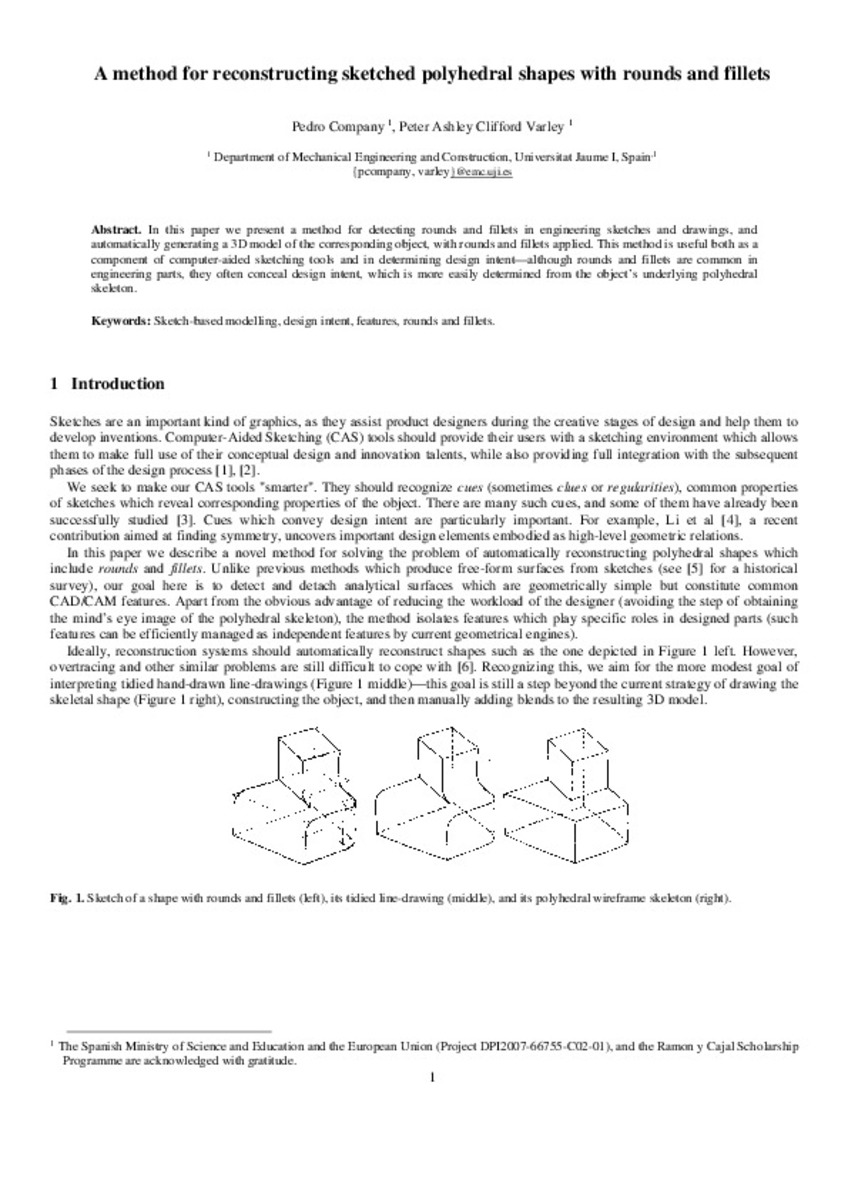Mostrar el registro sencillo del ítem
A method for reconstructing sketched polyhedral shapes with rounds and fillets
| dc.contributor.author | Company, Pedro | |
| dc.contributor.author | Varley, Peter Ashley Clifford | |
| dc.date.accessioned | 2016-02-03T11:33:34Z | |
| dc.date.available | 2016-02-03T11:33:34Z | |
| dc.date.issued | 2010 | |
| dc.identifier.citation | ASHLEY, Peter, et al. A method for reconstructing sketched polyhedral shapes with rounds and fillets. In: Smart Graphics. Springer Berlin Heidelberg, 2010. p. 152-155. | ca_CA |
| dc.identifier.uri | http://hdl.handle.net/10234/147990 | |
| dc.description.abstract | In this paper we present a method for detecting rounds and fillets in engineering sketches and drawings, and automatically generating a 3D model of the corresponding object, with rounds and fillets applied. This method is useful both as a component of computer-aided sketching tools and in determining de- sign intent—although rounds and fillets are common in engineering parts, they often conceal design intent, which is more easily determined from the object’s underlying polyhedral skeleton. | ca_CA |
| dc.format.extent | 4 p. | ca_CA |
| dc.format.mimetype | application/pdf | ca_CA |
| dc.language.iso | eng | ca_CA |
| dc.publisher | Springer International Publishing AG, Part of Springer Science+Business Media | ca_CA |
| dc.relation.isPartOf | Lecture Notes in Computer Science. Smart Graphics, Volume 6133, p. 152-155. | ca_CA |
| dc.rights | Copyright© Springer International Publishing AG, Part of Springer Science+Business Media | ca_CA |
| dc.rights.uri | http://rightsstatements.org/vocab/InC/1.0/ | * |
| dc.subject | Sketch-based modelling | ca_CA |
| dc.subject | design intent | ca_CA |
| dc.subject | features | ca_CA |
| dc.subject | rounds and fillets | ca_CA |
| dc.title | A method for reconstructing sketched polyhedral shapes with rounds and fillets | ca_CA |
| dc.type | info:eu-repo/semantics/article | ca_CA |
| dc.identifier.doi | 10.1007/978-3-642-13544-6_14 | |
| dc.rights.accessRights | info:eu-repo/semantics/openAccess | ca_CA |
| dc.relation.publisherVersion | http://link.springer.com/chapter/10.1007/978-3-642-13544-6_14 | ca_CA |







